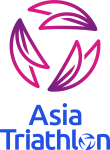History of triathlon

The concept of modern triathlon originated in France in the early twentieth century. The newspaper L’Auto reported on a competition called Les Trois Sports, the condition of which was three stages: 3 km of running distance, 12 km of cycling race and crossing the Marne Canal. All three parts were overcome without any break. Over time, the distance required to overcome increased. Currently, the most popular modification of the triathlon, included to the Olympic program, is the one that includes the swimming stage, cycling and running. At the very beginning of the development of triathlon as a separate sport, the swimming stage was final. It was assumed that athletes, tired of cycling and running, will be able to relax in the water. But with the increase in the number of athletes participating in competitions, the number of dangerous moments for the life of the athlete increased. Tired after running and cycling the muscles cramped. Therefore, it was decided to put the swimming stage at the beginning of the competition.
Stages of the competition
Swimming
Competitions begin with swimming. A mass start of all participants from the shore, pontoon or straight from the water (in a long triathlon) is carried out. In the case of low water temperature in accordance with the rules of the ITU allowed the use of wetsuits with a thickness of 5 mm. Usually, the swim follows a triangular route, marked by buoys and floats. For each arbitrary reduction in the length of the route penalty points are awarded, and disqualification is possible. Athletes can use any swimming style they prefer. Most often - it is a crawl.
Bike race
After getting out of the water, athletes change clothes in the transit zone, sit on bicycles and begin the cycling stage. There are aid stations along the distance, but technical assistance for professionals is prohibited. The short triathlon uses regular road bikes for group racing. In Ironman professionals prefer bicycles that are more similar to bicycles for a separate race in cycling. According to the rules of the International Triathlon Union (ITU), road bicycles are allowed to use short aerbars mounted on the steering wheel. Aerobar should not protrude ahead of the line connecting the outer parts of the brake levers. The aerbar itself must either have no protruding parts at all, or the protruding parts of the aerbar must be connected by a jumper (plastic insert or just several layers of electrical tape). Long aerbars are prohibited, like those used in cycling in individual TT. This is understandable, since there is no special benefit from the “lounges” in the short triathlon, due to the opportunity to improve their aerodynamics just by hiding behind the back of the athlete. In the Olympic triathlon on the bicycle stage, aerobar is allowed, that is, athletes can ride in a group. In Ironman triathlon leading is forbidden, the athlete must go a certain (about 10-15 meters) distance from the bike or the referee car in front, so the aerodynamics of the bike becomes quite important.
Run
The main rule is that the athlete must move on his feet.
Change between stages
Observance of the order of change between the stages is strictly regulated (swimming -> bicycle -> running). Athletes should not interfere with other athletes (while preparing their bikes or when changing clothes). They can manually move bicycles only within their designated area before and after arrival. The helmet must be worn before the start of the race and removed after the bike is mounted on a special ramp or place reserved for it. Nude appearance during dressing is prohibited by the rules of the competition in accordance with international standards. During the cycling stage, the license plate should be on the back of the athlete, during the race - on the chest. The athlete must meet the time limit for each stage.
Punishments
During the competition, athletes are not allowed to interfere with each other. If this happens during the swim, then at the end of it should be an athlete's delay for 30 seconds. If this happens during cycling or running, the athlete is warned with a yellow card. He then needs to stop and wait for permission to continue the competition. When he/she committing dangerous acts or repeated violation of the athlete may be disqualified after presenting him a red card. Two yellow cards during one stage automatically turn into red, and the athlete is disqualified.
 Рус
Рус Qaz
Qaz










